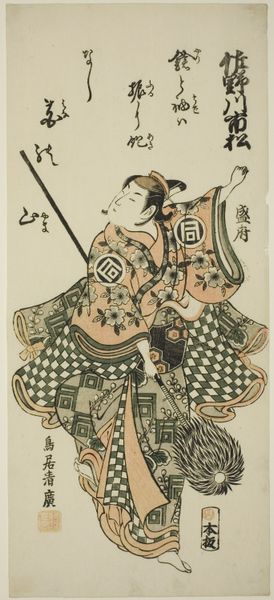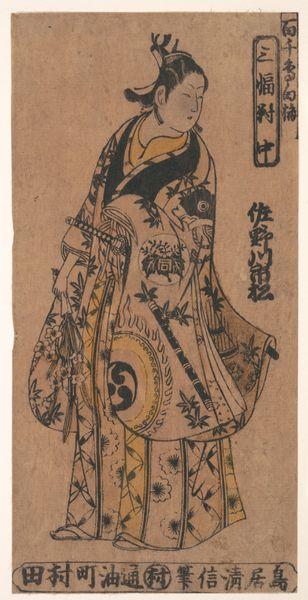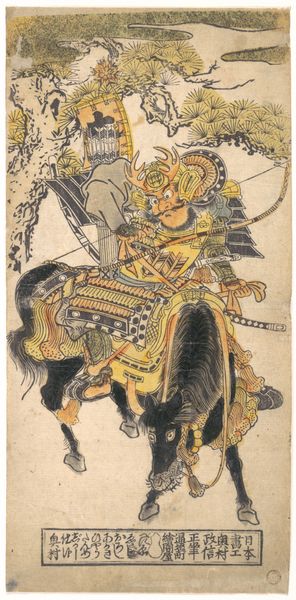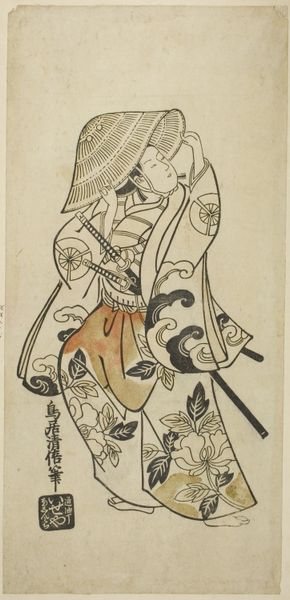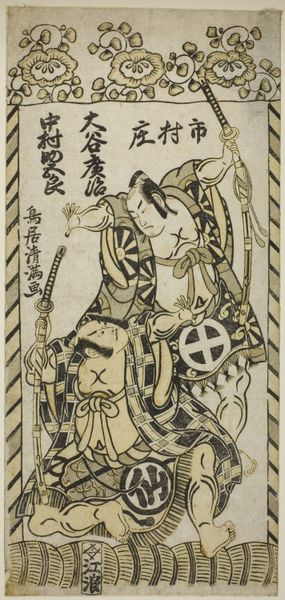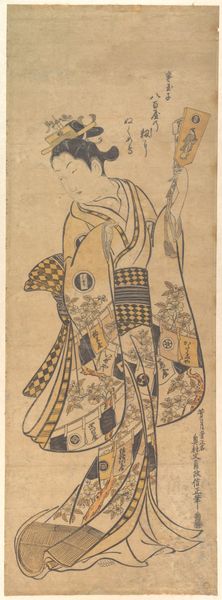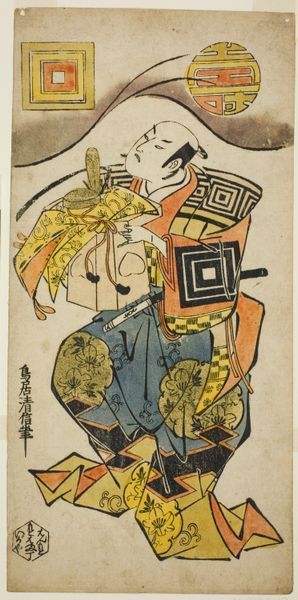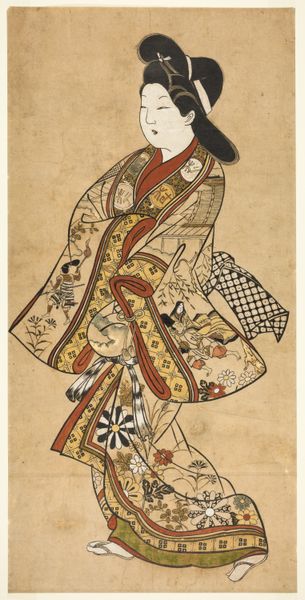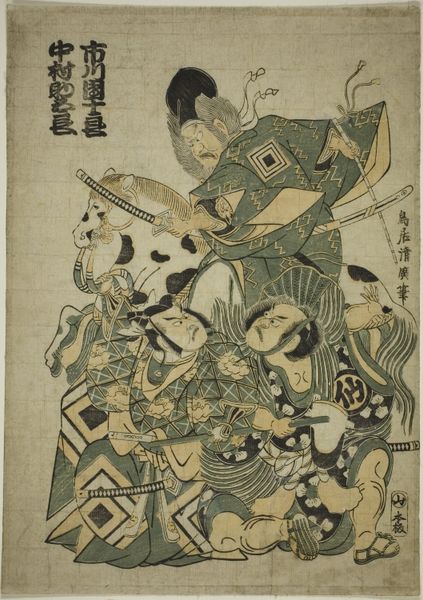
The Actors Segawa Kichiji II as Okichi, Bando Hikosaburo II as Shuntokumaru, and Onoe Kikugoro I as Sagizaka Bannai in the play "Yura Sengen Tsuki no Minato," performed at the Ichimura Theater in the eighth month, 1754 1754
0:00
0:00
print, ink
#
portrait
# print
#
asian-art
#
ukiyo-e
#
figuration
#
ink
#
history-painting
Dimensions: 11 1/4 × 5 1/2 in.
Copyright: Public Domain
Curator: So, here we have a print by Torii Kiyohiro from 1754, currently residing at The Art Institute of Chicago. Its rather a mouthful, but the full title is “The Actors Segawa Kichiji II as Okichi, Bando Hikosaburo II as Shuntokumaru, and Onoe Kikugoro I as Sagizaka Bannai in the play "Yura Sengen Tsuki no Minato," performed at the Ichimura Theater in the eighth month, 1754.” Editor: Wow, that title is almost as long as the play must have been! My first impression is that the figures look...packed together. It’s busy, but somehow it creates a sense of contained energy, a dramatic flourish held within a very defined space. Curator: Exactly! And that containment is really key when we look at ukiyo-e prints within the larger socio-political context. This print functioned as a form of celebrity culture. These weren't just actors; they were stars, idols. Their likenesses, depicted here in elaborate costumes and striking poses, circulated amongst the public, reinforcing theatrical trends. It created an interesting dynamic: popular theater fueled the art, and the art boosted theater revenue and reputation. Editor: It's wild to think about that kind of star power translated into prints back then, like ancient Instagram, I suppose? And I'm intrigued by the horse--it adds a touch of realism amidst all the stylized figures, almost comically stoic given what must be some crazy plot line from the sounds of the title. Do you think Kiyohiro aimed to portray specific nuances from the play? Curator: To a degree. While we might not know every detail of "Yura Sengen Tsuki no Minato," Kiyohiro and other artists were keenly aware that print sales depended upon capturing the audience's imagination. Elements would have reflected recognizable scenes and helped solidify actor-character associations, strengthening public engagement. In this case the central theme of retribution that the play depicts and it’s costuming would have made a statement, the use of colour and ink serving the practical purpose of capturing emotion as well as a story that many at the time would be aware of. Editor: It’s almost voyeuristic in a way, isn't it? Peeking into a cultural moment so far removed from our own, where entertainment was packaged and consumed in such a deliberate, aesthetic way. These actors knew they were being immortalized as icons while playing out fictional roles in fictional scenarios – it’s meta. Curator: Indeed! The blurring of realities adds a layer of complexity to this seemingly simple print. And seeing how theater influenced trends, political sentiment and overall societal narrative reminds you that entertainment plays a much bigger role than people sometimes allow for. Editor: So true, even after nearly 300 years it still has such incredible presence! Curator: Indeed. It prompts contemplation and connection. Thank you. Editor: Couldn’t have said it better myself! Thanks!
Comments
No comments
Be the first to comment and join the conversation on the ultimate creative platform.

